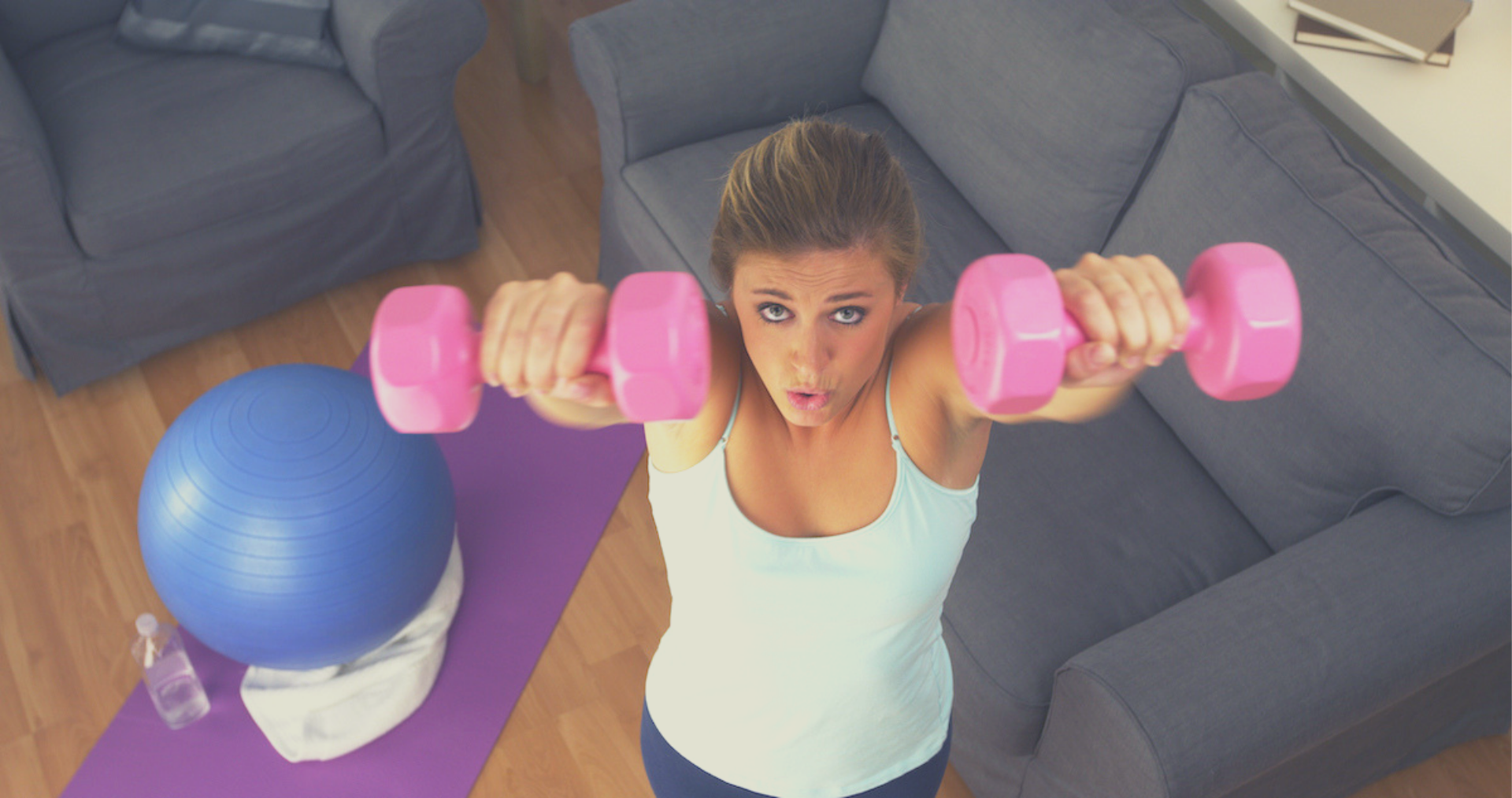Exercise is part of the mechanism for getting fit and staying healthy and is relatively pain-free. Hopefully, this beginner’s guide will help people of all ages learn how to start exercising, get motivated and keep it up.
We all have our idea of what being fit is. To be physically fit means to be in a state of health and well-being. Being fit is a good thing in so many ways.
Contents
Why Is Exercise A Good Thing?
As this is all about getting started with exercise I won’t dwell too long on something that the medical profession and Government Health bodies have been telling us for years now. We are not moving enough and our sedentary lives bring associated health risks both physically and mentally.
New evidence according to The 2nd Edition of the Physical Activity Guidelines For Americans tells us that physical “activity has many health benefits independent of other healthy behaviors, like good nutrition”.
These guidelines show that exercise can be positive in different areas of life-changing conditions like helping in the prevention of 8 cancers, reducing the risk of dementia, heart disease, strokes and those of us with high blood pressure and the progression of type 2 diabetes and hypertension
The benefits of exercise have seemingly no limits. It’s clear that mental health is positively affected and has been shown to reduce anxiety and depression symptoms.
This, added to weight control, sleeping better, feeling happier, an enriched sex life – I just threw that one in – better skin and improved digestion, it all adds up to a measurably better quality of life and who doesn’t want that?
When we exercise and use good food as the fuel we get fit… or fitter.
What Is Exercise
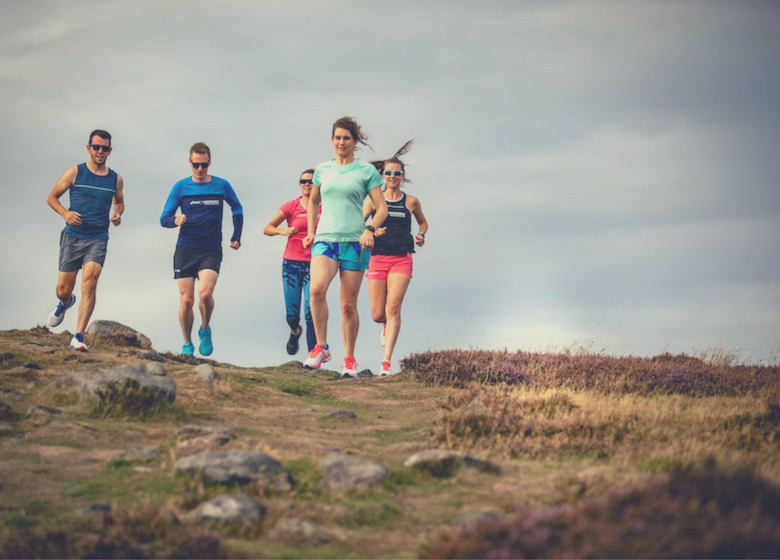


Exercise is simply physical exertion through bodily activity that increases or maintains our fitness level and overall well-being.
Because we are what we are, ie humans, we have to compartmentalize and label different types of things and exercise, the means of getting fit is no exception.
There are many forms of exercise. Some have come and gone and variations crop up regularly but avoiding ‘overwhelm’ the 3 broad areas are…
Aerobic or cardiovascular (Cardio)
This is normally the bulk of a fitness regime and is a steady continuous form of exercising such as running, cycling, rowing, etc. providing us with stamina. Cardio exercise improves the efficiency of the heart and the pulmonary systems.
They are responsible for transporting fuel, nutrients and oxygen to the rest of the body’s organs & tissues whilst removing the carbon dioxide and waste.
Strength or anaerobic
For muscle speed, power and strength we make them work against a weight or force so-called resistance or strength training. The resistance is supplied by free weights, machines, bands or one’s own body weight.
Flexibility and balance
To strengthen and aid muscle recovery, and improve coordination and balance there are stretching movements. Examples of these types of low impact exercises include Yoga, Pilates and Tai Chi.
There are other now, established forms that either come under one of the above or are a combination of 2 or 3. These include HIIT, Boot Camp, Calisthenics and more.
How To Start Exercising – The Plan
How much exercise for benefit gain
If you are beginning an exercise regime from being inactive then you will want to start slow. You want to maintain motivation and not lose heart before you get going.
Even 10 minutes of moderate exercise every other day will show fitness benefits and then gradually, by increasing the session length and quality you can reach your goals.
Let’s take the US and UK guidelines on how much exercise you should be doing to gain some quantitative benefits.
For adults under 65 and without disability or chronic illness the recommendation is from 2.5 hours to 5 hours of aerobic (cardio) activity spread across the week including moderate to vigorous workouts.
As part of the aerobic sessions, I would include flexibility and balance-orientated movements along with general stretching.
Also 2 sessions of strength workouts a week of moderate intensity that include all the body’s muscle groups.
How much exercise intensity
A moderate intensity workout is simply when your breathing and heart rate increase and you’re getting warm.
Vigorous workouts are when your breathing is deeper and faster and your heart rate goes up quickly.
Exercises concerned with flexibility, balance and general (static) stretching are always done at a slow but controlled pace without jerky movements.
A time and place for your workouts
Motivation and consistent endeavor are key, so work out roughly the days it would be most convenient to set aside for action.
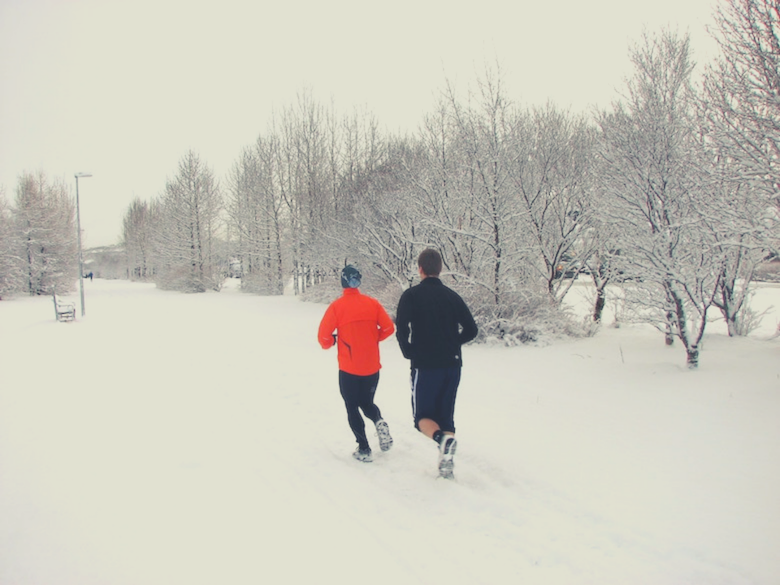


Mornings are my favorite time to work out these days as it sets you up for the day but it wasn’t always the case. I used to fit my exercise more tightly with my work so lunchtime runs and after-work gym sessions.
If you’re not a morning person later in the day is fine but best not to exercise on a full stomach.
As we are concentrating on working out from home as opposed to the gym find a suitable space, a safe place where there are enough room and one that is devoid of distractions.
Extend the space to the outdoors so maybe the garden or the local park just to keep things interesting.
So the schedule and location are roughly defined.
The mental side of exercising
I think because I’ve always enjoyed sport, indoors and outdoors all my life it felt normal to get into the habit of exercise and if my diary was a bit scant one week I would feel guilty.
Without worrying the reader, exercise should be a lifelong habit and so trying to do too much too early will be demotivating so better slow, low impact and concentrate on a consistent, regular progression.
Keep in mind when it’s a below-par Sunday morning and you just want to laze around, think about how great you’ll feel after a workout.
How much more you’ll enjoy a big breakfast. How trim you’ll be getting. And how easier it’ll be next time.
After a short period (when you will see benefits) you’ll be able to extend and intensify sessions while quickly knocking off those goals.
Set the ultimate and mini goals
Don’t be afraid of setting a goal that might seem way out of sight although not unrealistic. Run a marathon in 18 months – why not? And if it turns out to be a 10-mile race then all’s well.
Also, set smaller very reachable goals. Measurable simple milestones that can be worked on. The number of pull-ups or press-ups. The number of times running around the block. Waist measurement.
Record a benchmark and improve it over time.
Keep a fitness diary.
Your Exercise Structure
Don’t forget to keep hydrated so drink enough water before during and after a workout.
The exercise structure that I employ is based on 3 solid workouts a week and it includes cardio endurance, strength training and exercise for flexibility and coordination.
However, you can mix and match so concentrate on strength 2 times a week and cardio 3 times. Half an hour to 40 minutes for each session would be great.
Always include a 10 minute plus warm-up before and stretching and a warm down session after the cardio or strength training.
Warm-up
Get the body moving and blood pumping for around 5 minutes until you’re nice and warm.
Suggested movements…
Jogging or marching on the spot accentuating alternate arm movement back and fro.
Anything where the arms and legs are engaged so dance movement would be a good warm-up.
Dynamic stretching
Dynamic as opposed to static stretching for pre-aerobic exercise has become the recommended choice. It involves a slow controlled move engaging multiple parts of the body from position A to B and then back again, normally repeated a few times.
Static exercises involve exerting one muscle group and holding for around 20 secs. This is better suited as part of the cooling down regime.
Dynamic stretching is the ideal warm-up routine for any workout or sports session as it activates all the muscle groups, improves the range of motion and increases performance.
Cardiovascular or aerobic exercise
The core of an exercise agenda where the goal is to generally improve fitness and gain the benefits described above.
If you are a keen runner then this session could simply be a run, (although that could mean intervals, fartlek, long steady or sprints).
Or it could be swimming, brisk walking, cycling or any activity which exercises the heart and lungs by sustained moderate to vigorous movement.
And that could be something similar to dynamic stretching but where repeated body movements are more fluid and rhythmic.
Here is a 19-minute low impact cardio workout that uses the structure of a period of activity followed by a short low movement rest and then onto another session of higher intensity.
And here is another from Fitness Blender, this time a more rigorous 32-minute workout with the same structure but with a warm-up and cool down session.
Starting with something like this – don’t forget to take it nice and steady at first – 3 times a week would be ideal but then you’ll want to add some resistance exercises.
I like to include this next section within the whole session but it can be a good idea to do weight training on alternate days, a couple of times a week. Don’t forget to warm up and down though with stretching before and after.
Resistance exercises
Lifting heavy weights was thought to be the domain of the young narcissist but in fact, much of the benefits concern aging and those like me getting on and past the middle bit of our lives.
The physical appearance of bulging biceps can be a goal for the macho, but larger, leaner muscle mass means stronger bones which lower the risk of osteoporosis and fractures.
Adaptive skeletal and neuromuscular system changes are made by men and women of all adult ages through resistance training and so increasing everyday functional performance.
Strength training not only increases muscle mass but also boosts your metabolism, even while at rest.
But in the elderly, studies have shown that the natural muscle atrophy of aging can be offset by strength training (preferable to aerobic) which means better and more effective mobility, balance, coordination and strength.
Types of strength exercises
There are 2 methods of exercise, one involving repeated muscle contraction and lengthening against a set weight called Isotonic like this bicep curl…
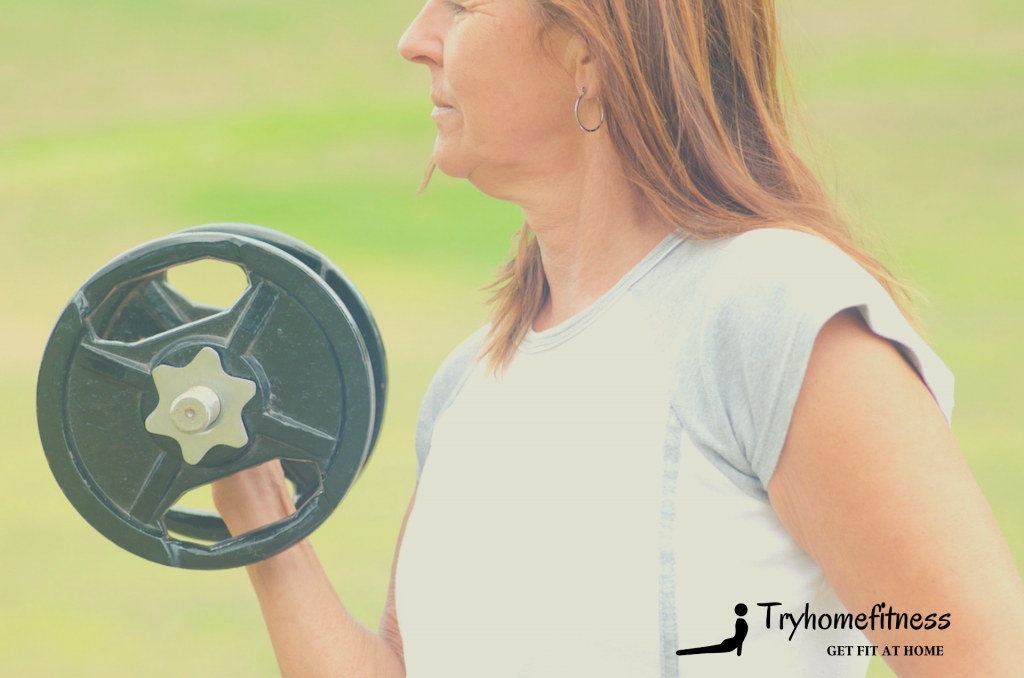


The other one is where muscle contractions occur without the movement of body parts. This is called isometric an example being this stationary plank.
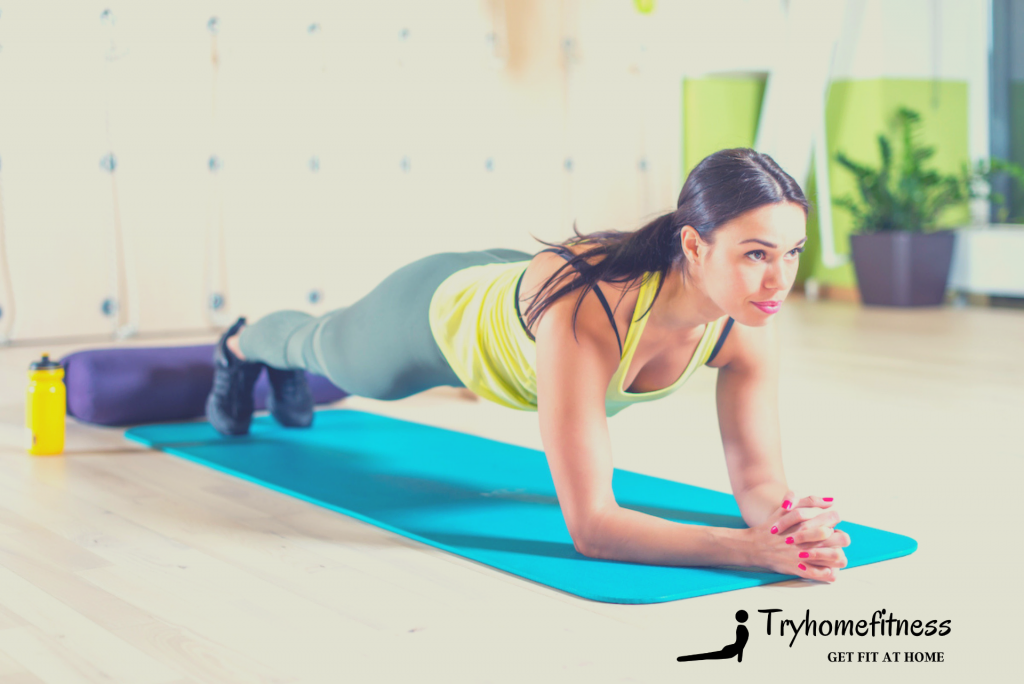


Calisthenics largely uses the body as the resistance weight but can be a mixture of both isotonic and isometric.
New to strength training?
When starting out, strength training use exercises that activate all the major muscle groups and make sure to rest them for 48 hours.
Initially try strength exercise movements comprising one set of 6 low impact repetitions each. Once comfortable with this the number of reps can be increased to 8, 10, etc. and the number of sets to 2 then 3 with 30 seconds rest between each set.
This can be using weights or just the body weight as resistance such as squats, pull-ups and press ups.
Using weights for strength training
Weights come in the form of free weights, typically dumbbells and barbells, your body weight using your body as resistance and weight machines like full-blown multi-gyms.
Weight machines vs free weights
Weight machines, normally the domain of the fully stocked gym, are convenient and safer to use but are relatively expensive and take up a lot of room.
Weight machines work in a fixed plane so are restrictive in terms of variety of movement and therefore don’t allow for a full range of muscle work although multi-gyms can be configured to allow for many alternate positions.
Multi-gyms are a popular addition to the home gym as they provide a wide range of possible muscle exercises.
Using free weights and multi-gyms to an extent has the added advantage of promoting better balance and coordination as they activate the joint stabilizer muscles.
Virtually any muscle group, in any direction in the body can be activated.
Free weights comprise of mainly 2 components, dumbbells and barbells and are used most effectively to tone the upper body.
This workout exercises the upper, shoulders and arms.
Bodyweight exercises can be used for upper body strengthening as well but it’s more difficult to use free weights for the legs and butt. Although you can use weights such as fit balls, ankle weights, etc.
This lower body workout uses just the weight of the body as resistance and no equipment.
Other useful equipment for the home gym might be resistance bands which offer a cheaper alternative (or addition) to free weights. The elastic strength of the band material offers weight resistance.
Full body programs can be executed and they’re very handy for traveling.
The other useful item although not strictly equipment is the house furniture. Chairs can be used for instance doing tricep dips.
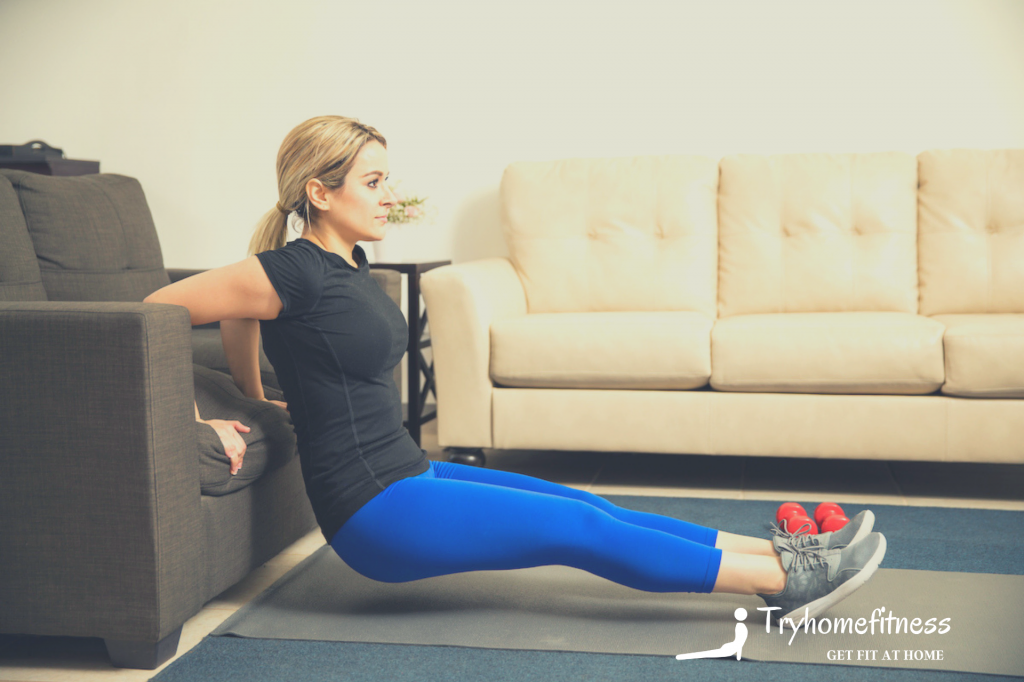


Static stretching for cooling down
Static stretching is now recommended for an after-session cool down. It releases tight muscles and helps recovery and the possibility of muscle soreness. The cooldown session also aids flexibility.
Each stretch is held firmly but comfortably for around 10 to 30 seconds and all the major muscle groups should be engaged.
Static stretching should be done after strength training and light warm down ‘running on the spot’ type of exercise should be done after a cardio workout.
That’s the perceived wisdom although I like to always do a static stretch session after either a strength session or cardio.
Clothing and equipment for the home gym
Clothing for general exercise
The very minimal stuff you need to start working out at home is a suitable area, either an uncluttered room or your patio and sympathetic clothing. Clothes that don’t impede your movements.
You may want to consider clothing that wicks too. This is a fabric that you wear close to the body that moves excess moisture away from the skin to the material’s surface drawing off the water by capillary action.
I love wearing compression shirts as I sweat a lot and they also pull you in and make you feel the part.
And talking of sweating. If you find it uncomfortable always keep a handy hand towel at hand and wipe yourself down regularly.
I tend to always wear shorts or tight leggings just because of aiding free movement.
Basic equipment for home workouts
You can do a lot without too much equipment although I would start with a yoga mat. You will be doing exercises on the floor and besides a mat defines your area – it sets the stage.
Basic equipment for aerobic fitness, balance and coordination.
This includes skipping rope, resistance bands, rebounder, hula hoop, steps (yoga blocks), balance trainer and freestanding punch bag.
We have spoken of bands before, they can be used aerobically or for strength or a mix of both.
The skipping rope is a great choice for an aerobic session. I am frustratingly rubbish at skipping though.
The rebounder or mini-trampoline is an interesting one. I remember at an age when I should know better, trying to relive my youth and using my friend’s daughter’s garden trampoline. I was soon blowing hard and wishing I hadn’t. It was tough.
These low impact rebounders afford less scope for a tucked 1 and 3/4 front somersault and the jury is still out on how effective they are aerobically but they have their advocates.
Basic equipment for strength training at home
These may include…
- a bench
- dumbbells
- kettlebells
- barbell
- weight plates & rack
- power cage
- tower
- suspension kit
- your body weight – cheap
The traditional dumbbells are really good for adding that resistance to the upper body moves and kettlebells add a different and more energetic flowing movement to your workouts.
Adjustable dumbbells are particularly useful for home use as they take up less room and you have a series of weights to hand with an easily adjustable mechanism.
Barbells and weight plates (and rack) are used similarly to dumbbells but have a bar with which you can add variable weights at either end. Barbells are more associated with strength as generally heavier weights can be activated.
Serious home gym equipment
Home gym equipment machines can be expensive so make sure you have done the right thing and committed to a life of health and well-being – there’s no going back 😀
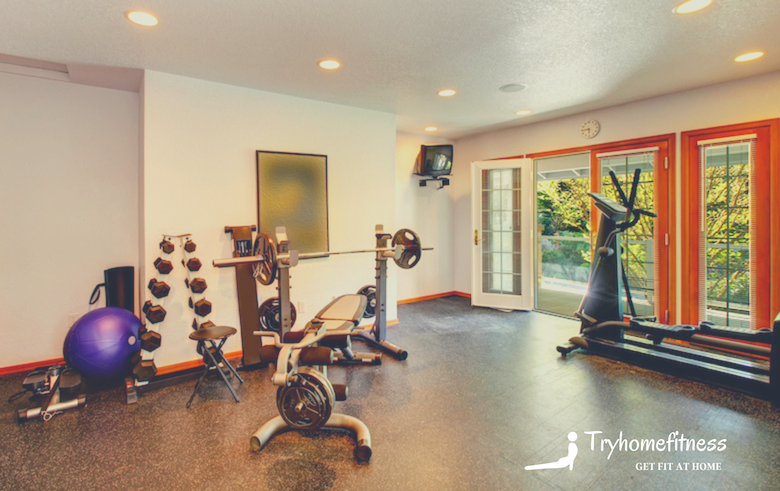


This larger equipment can also take up a chunk of space so maybe a nursery is a wiser choice if you’re expecting a new family member.
I’ve always loved the simple pleasure of running outside on a wonderful Spring morning listening to the bird song but treadmills are a favorite choice even though they can cost an arm and a leg.
Good ones can mimic the terrain and programming allows for interval training with hills and more.
I have much the same argument with cycling although there are several different choices for bikes that offer different dimensions.
There are indoor cycling spin bikes, upright (static), recumbent, fan, self-powered and generally more expensive newer smart bikes that can be used to hook up to remote sessions through apps.
But also learn from your efforts and adjust the workout according. Check this smart bike.
As well as treadmills for running and walking and various types of indoor bikes for cycling there are rowing machines, the elliptical (cross-trainer), ski machines, and stair steppers.
The price range is a few hundred to many thousands of dollars depending on the home gym machines’ functionality and build.
Even the basic exercise machines will have some form of performance feedback which might not be particularly accurate like ‘calories burned’ but they motivate for you to return for a better or bigger aggregate score.
The final large exercise machine to mention is the multi-gym or home gym. These come in many types and configurations and can be a great piece of home gym equipment for strength training but can be costly and take up a lot of room.
One of the main benefits of investing in a multi-gym is that with one unit you can exercise all the body’s muscle groups including arms, legs, back, chest and abs.
Increasing the home fitness benefits
There is no doubt that when starting to train regularly you’ll find almost immediate improvement in the cardiovascular and muscular systems and therefore feel fitter.
Feeling fit comes with other benefits as I have mentioned before that add to our quality of life.
Improvement through progressive resistance
There is a danger that repeating the same exercise plan can lead to a lack of motivation.
Further, after gaining significant gains in health and wellness there will likely be a plateauing of rewards through the stagnation of performance.
To continue on the road to better strength, more endurance and fitness, you need to change the routines by more of the same and at a higher pace.
This can be done steadily making sure that your body has the required rest and recovery.
Another easy way to not only stay interested but to increase body performance is to completely change one discipline for another but still use roughly the same muscle groups – like cycling for running.
Or with strength training bicep curls can be done in a multitude of ways – trying decreasing the weights and increasing the number of reps. Another way is to slow the tempo by doing slow reps – this is excellent for toning and sculpturing the muscle groups.
Consider a training buddy (phone a friend)
Some people like training alone and other gregarious types would benefit from working out with a friend.
Sharing a workout session can add another dimension and make it a lot of fun. Even better would be to get the generations involved from children to grandparents.
Explore other cardio-beneficial exercise forms
I have mentioned the cardio forms of exercise like running and cycling but there are other forms, some of which are often thought of as more a way of life. They have different forms but can be thought of beneficially as aerobic with elements of strength, endurance, balance, coordination with a sprinkling of meditation.
So to change things up but still retain the benefits of exercise try Yoga, Pilates, Thai Chi or maybe if dance movement excites you, Barre. Shadowboxing is also something that you might find a positive alternative to regular cardio moves.
Getting serious – upping the stakes
And finally, you have found yourself enticed into a world of feeling great and can’t stop – no it’s not a bad thing – well I suppose we should all be wary of obsession.
Upping the equipment
Now you’re hooked those barbells aren’t going to be wasted so you might be looking to get better equipment or more of it. There is always another gadget to buy but be aware that you can do an awful lot of good with the basics so when deciding on new equipment I would recommend buying quality over quantity and maybe a nice multi-gym option rather than several machines that over time become redundant.
Upping the intensity
Getting more serious means upping the intensity and regularity of workouts but don’t forget the recovery periods, drink more water and listen to your body. As with starting out, any step change in your workout regime should be accompanied by a visit to your medical professional.
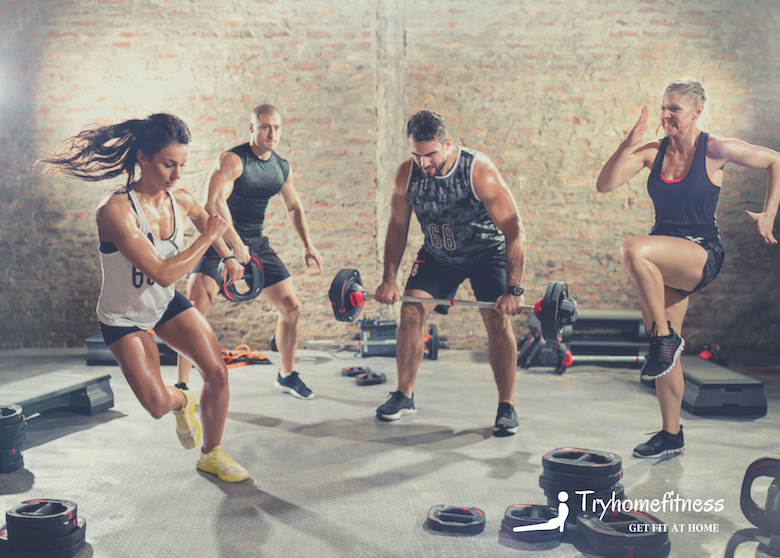


Talking of which. HIIT is a training program not for the faint of heart although research has shown that as a fat-burning exercise it is more efficient than other exercise workouts.
High-Intensity Interval Training isn’t normally a long program, around 20 to 30 minutes but it is as its name suggests designed to get the cardiovascular system working at just under 100% – fast but for short spells followed by a similar time of ‘rest’.
It’s a very time-efficient program if that’s about all the time you can afford but can be used to “sex up” your regular training habits. Again make sure you have had a positive health check.
Get a personal trainer
I don’t know about you but having a regular Personal Trainer is just a bit decadent and rock and roll although wouldn’t it be nice? And besides, I am one so it seems a little unnecessary 😀
I must say though, the process of picking one could be a lot of fun. You can hire one for a few sessions to get on the right track but Youtube is your friend.
Summary
We all know many of the benefits of exercise to get fit and feel well at any age although it’s sometimes hard to do the steps needed regularly. It takes a bit of time and sometimes a bit more motivation.
I hope this beginner’s guide to exercise has started or propelled your journey on the path to getting fit at home. You will feel (and look) better. Getting fit at home is worth the effort.

